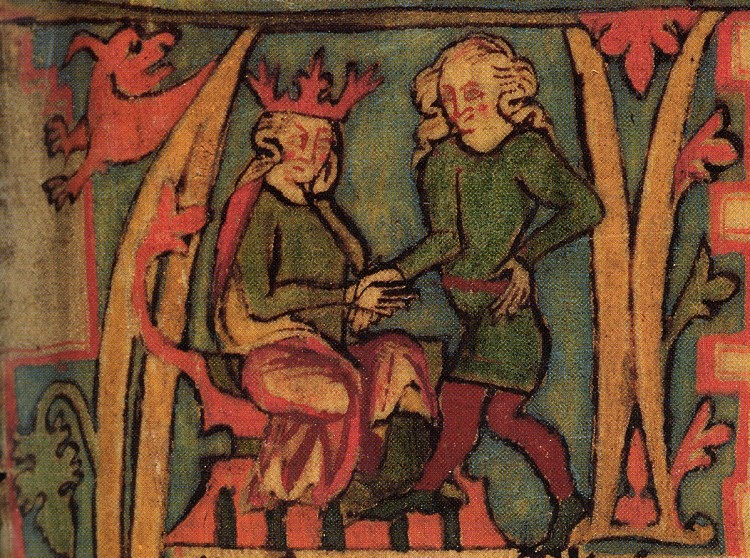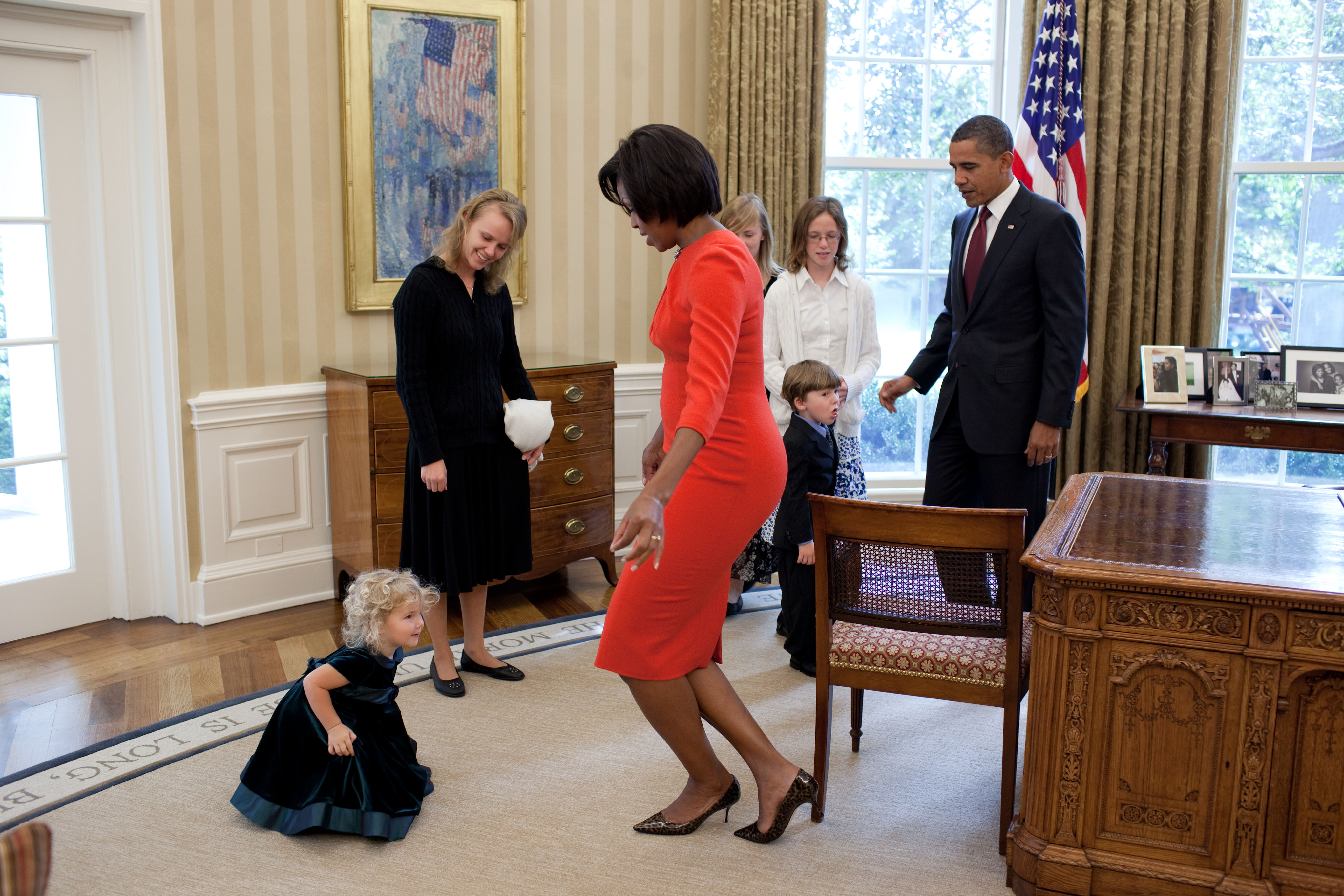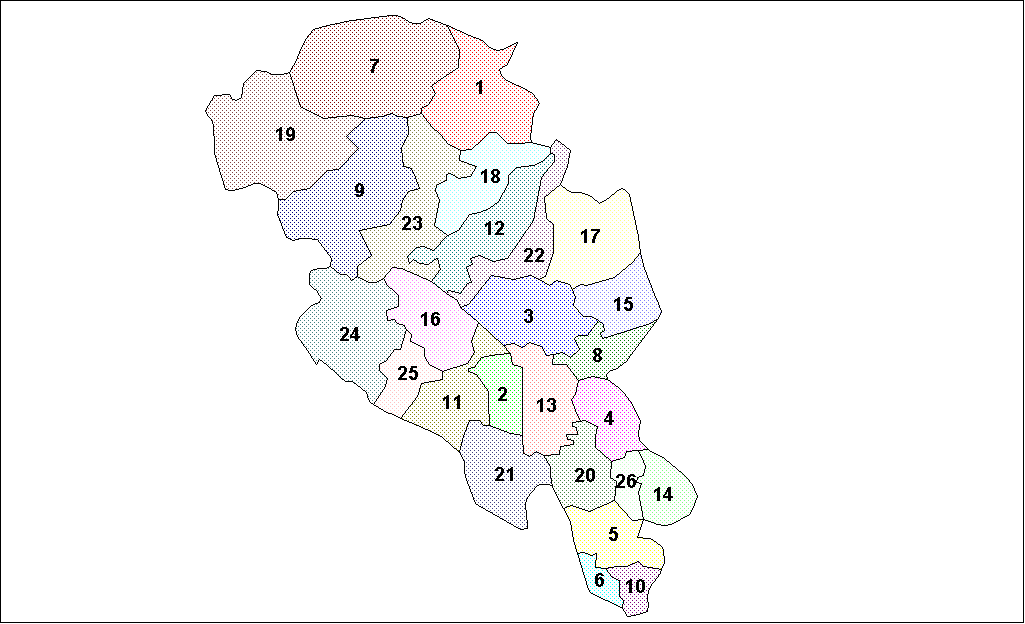|
Old Norwegian
Old Norwegian ( and ), also called Norwegian Norse, is an early form of the Norwegian language that was spoken between the 11th and 14th century; it is a transitional stage between Old West Norse and Middle Norwegian. Its distinction from Old West Norse is mostly a matter of convention, but it is also the period when the language begun to develop its immense diversity. Old Norwegian is typically divided into the following dialect areas: * Western Norway: ** Trøndelag ** Northwest Norway ( Romsdal, Sunnmøre, Nordfjord and the coast of Sogn) ** Southwest Norway: *** Outer Southwest ( Rogaland and Hordaland) *** Inner Southwest ( Agder, western Telemark, Setesdal, continental Sogn, Hordaland and Rogaland, including Iceland and the Faroe Islands) * Eastern Norway: ** Southeast Norway ** East Norway Proper No sources appear to exist from which the dialectal variation of the rest of Norway might be discerned. There do, however, seem to be reasons to believe the region of ... [...More Info...] [...Related Items...] OR: [Wikipedia] [Google] [Baidu] |
Kingdom Of Norway (872–1397)
The term Norwegian Realm (, , ) and Old Kingdom of Norway refer to the Kingdom of Norway's peak of power at the 13th century after a long period of Civil war era in Norway, civil war before 1240. The kingdom was a loosely unified nation including the territory of modern-day Norway, modern-day Swedish territory of Jämtland, Härjedalen, Herjedalen, Ranrike (Bohuslän) and Idre and Särna, as well as Norway's overseas possessions which had been settled by Norwegians, Norwegian seafarers for centuries before being annexed or incorporated into the kingdom as 'tax territories'. To the North, Norway also bordered extensive tax territories on the mainland. Norway, whose expansionism starts from the very foundation of the Kingdom in 872, reached the peak of its power in the years between 1240 and 1319. At the peak of Norwegian expansion before the Civil war era in Norway, civil war (1130–1240), Sigurd the Crusader, Sigurd I led the Norwegian Crusade (1107–1110). The crusaders won b ... [...More Info...] [...Related Items...] OR: [Wikipedia] [Google] [Baidu] |
Sogn
Sogn is a traditional district in Western Norway (''Vestlandet''). It is located in the county of Vestland, surrounding the Sognefjord, the largest/longest fjord in Norway. The district of Sogn consists of the municipalities of Aurland, Balestrand, Hyllestad, Høyanger, Gulen, Leikanger, Luster, Lærdal, Sogndal, Solund, Vik, and Årdal. The district covers . The largest urban area in Sogn is the village of Sogndalsfjøra (in Sogndal municipality), with 3,455 residents. The second largest urban area is the village Øvre Årdal (in Årdal municipality), with 3,397 people (this village used to be the largest, but recently it was passed by Sogndalsfjøra). The district of Sogn comprises the southern part of the former county Sogn og Fjordane. The districts of Sunnfjord and Nordfjord are the other two districts in the county. Etymology The name ''Sogn'' derived from the name of Sognefjord. The name of the fjord is from the root of ''súga'' "to suck", referring to the s ... [...More Info...] [...Related Items...] OR: [Wikipedia] [Google] [Baidu] |
Vowel Harmony
In phonology, vowel harmony is a phonological rule in which the vowels of a given domain – typically a phonological word – must share certain distinctive features (thus "in harmony"). Vowel harmony is typically long distance, meaning that the affected vowels do not need to be immediately adjacent, and there can be intervening segments between the affected vowels. Generally one vowel will trigger a shift in other vowels, either progressively or regressively, within the domain, such that the affected vowels match the relevant feature of the trigger vowel. Common phonological features that define the natural classes of vowels involved in vowel harmony include vowel backness, vowel height, nasalization, roundedness, and advanced and retracted tongue root. Vowel harmony is found in many agglutinative languages. The given domain of vowel harmony taking effect often spans across morpheme boundaries, and suffixes and prefixes will usually follow vowel harmony rules. Termi ... [...More Info...] [...Related Items...] OR: [Wikipedia] [Google] [Baidu] |
Curtsey
A curtsy (also spelled curtsey or incorrectly as courtsey) is a traditional gendered gesture of greeting, in which a girl or woman bends her knees while bowing her head. In Western culture it is the feminine equivalent of bowing by males, although men will commonly curtsy in some churches as a simplified genuflection. Miss Manners characterizes its knee bend as deriving from a "traditional gesture of an inferior to a superior." The word "curtsy" is a phonological change from "courtesy" known in linguistics as syncope. Overview According to Desmond Morris, the motions involved in the curtsy and the bow were similar until the 17th century, and the sex differentiation between the actions developed afterwards. The earlier, combined version is still performed by Restoration comedy actors. In more formal variants of the curtsy, the girl/woman bends the knees outward (rather than straight ahead), often sweeping one foot behind her. She may also use her hands to hold her skirt ou ... [...More Info...] [...Related Items...] OR: [Wikipedia] [Google] [Baidu] |
Slope
In mathematics, the slope or gradient of a Line (mathematics), line is a number that describes the direction (geometry), direction of the line on a plane (geometry), plane. Often denoted by the letter ''m'', slope is calculated as the ratio of the vertical change to the horizontal change ("rise over run") between two distinct points on the line, giving the same number for any choice of points. The line may be physical – as set by a Surveying, road surveyor, pictorial as in a diagram of a road or roof, or Pure mathematics, abstract. An application of the mathematical concept is found in the grade (slope), grade or gradient in geography and civil engineering. The ''steepness'', incline, or grade of a line is the absolute value of its slope: greater absolute value indicates a steeper line. The line trend is defined as follows: *An "increasing" or "ascending" line goes from left to right and has positive slope: m>0. *A "decreasing" or "descending" line goes from left to right ... [...More Info...] [...Related Items...] OR: [Wikipedia] [Google] [Baidu] |
Consonant
In articulatory phonetics, a consonant is a speech sound that is articulated with complete or partial closure of the vocal tract, except for the h sound, which is pronounced without any stricture in the vocal tract. Examples are and [b], pronounced with the lips; and [d], pronounced with the front of the tongue; and [g], pronounced with the back of the tongue; , pronounced throughout the vocal tract; , [v], , and [z] pronounced by forcing air through a narrow channel (fricatives); and and , which have air flowing through the nose (nasal consonant, nasals). Most consonants are Pulmonic consonant, pulmonic, using air pressure from the lungs to generate a sound. Very few natural languages are non-pulmonic, making use of Ejective consonant, ejectives, Implosive consonant, implosives, and Click consonant, clicks. Contrasting with consonants are vowels. Since the number of speech sounds in the world's languages is much greater than the number of letters in any one alphabet, Linguis ... [...More Info...] [...Related Items...] OR: [Wikipedia] [Google] [Baidu] |
Old Icelandic
Old Norse, also referred to as Old Nordic or Old Scandinavian, was a stage of development of North Germanic dialects before their final divergence into separate Nordic languages. Old Norse was spoken by inhabitants of Scandinavia and their overseas settlements and chronologically coincides with the Viking Age, the Christianization of Scandinavia, and the consolidation of Scandinavian kingdoms from about the 8th to the 15th centuries. The Proto-Norse language developed into Old Norse by the 8th century, and Old Norse began to develop into the modern North Germanic languages in the mid- to late 14th century, ending the language phase known as Old Norse. These dates, however, are not precise, since written Old Norse is found well into the 15th century. Old Norse was divided into three dialects: Old West Norse (Old West Nordic, often referred to as ''Old Norse''), Old East Norse (Old East Nordic), and Old Gutnish. Old West Norse and Old East Norse formed a dialect continu ... [...More Info...] [...Related Items...] OR: [Wikipedia] [Google] [Baidu] |
Oppland
Oppland is a former county in Norway which existed from 1781 until its dissolution on 1 January 2020. The old Oppland county bordered the counties of Trøndelag, Møre og Romsdal, Sogn og Fjordane, Buskerud, Akershus, Oslo and Hedmark. The county administration was located in the town of Lillehammer. Merger On 1 January 2020, the neighboring counties of Oppland and Hedmark were merged to form the new Innlandet county. Both Oppland and Hedmark were the only landlocked counties of Norway, and the new Innlandet county is the only landlocked county in Norway. The two counties had historically been one county that was divided in 1781. Historically, the region was commonly known as " Opplandene". In 1781, the government split the area into two: Hedemarkens amt and Kristians amt (later renamed Hedmark and Oppland). In 2017, the government approved the merger of the two counties. There were several names debated, but the government settled on ''Innlandet''. Geography Oppland ext ... [...More Info...] [...Related Items...] OR: [Wikipedia] [Google] [Baidu] |
Faroe Islands
The Faroe Islands ( ) (alt. the Faroes) are an archipelago in the North Atlantic Ocean and an autonomous territory of the Danish Realm, Kingdom of Denmark. Located between Iceland, Norway, and the United Kingdom, the islands have a population of 54,609 and a land area of 1,393 km². The official language is Faroese language, Faroese, which is partially mutually intelligible with Icelandic language, Icelandic. The terrain is rugged, dominated by fjords and cliffs with sparse vegetation and few trees. As a result of its proximity to the Arctic Circle, the islands experience perpetual Twilight, civil twilight during summer nights and very short winter days; nevertheless, they experience a Oceanic climate#Subpolar variety (Cfc, Cwc), subpolar oceanic climate and mild temperatures year-round due to the Gulf Stream. The capital, Tórshavn, receives the fewest recorded hours of sunshine of any city in the world at only 840 per year. Færeyinga saga, Færeyinga Saga and the writin ... [...More Info...] [...Related Items...] OR: [Wikipedia] [Google] [Baidu] |
Iceland
Iceland is a Nordic countries, Nordic island country between the Atlantic Ocean, North Atlantic and Arctic Oceans, on the Mid-Atlantic Ridge between North America and Europe. It is culturally and politically linked with Europe and is the region's westernmost and most list of countries and dependencies by population density, sparsely populated country. Its Capital city, capital and largest city is Reykjavík, which is home to about 36% of the country's roughly 380,000 residents (excluding nearby towns/suburbs, which are separate municipalities). The official language of the country is Icelandic language, Icelandic. Iceland is on a rift between Plate tectonics, tectonic plates, and its geologic activity includes geysers and frequent Types of volcanic eruptions, volcanic eruptions. The interior consists of a volcanic plateau with sand and lava fields, mountains and glaciers, and many Glacial stream, glacial rivers flow to the sea through the Upland and lowland, lowlands. Iceland i ... [...More Info...] [...Related Items...] OR: [Wikipedia] [Google] [Baidu] |
Setesdal
Setesdal (; older name: Sætersdal) is a valley and a traditional district in Agder County in southern Norway. It consists of the municipalities of Bykle, Valle, Bygland, Iveland, and Evje og Hornnes. The Otra river flows through the valley of Setesdal into the sea near Kristiansand. It flows southward from the Hardangervidda plateau in Telemark. The historic Setesdal starts at Evje and extends as far as the farm Bjåen, at the edge of the traditional region of Telemark. Øvre (Upper) Setesdal is in the municipality of Bykle. The municipalities of Iveland, Evje & Hornes and Bygland comprise the Nedre (Lower) Setesdal. Valle municipality is in the middle of the Setesdal valley. Norwegian National Road 9 runs through Setesdal. Etymology The oldest Norse form of the name was just ''Setr'', and this was later replaced by ''Setrsdalr'' ('the dale/valley of Setr'). The common word ''setr'' has the meaning 'homestead, farm' – and ''Setr'' was probably originally the name o ... [...More Info...] [...Related Items...] OR: [Wikipedia] [Google] [Baidu] |
Telemark
Telemark () is a Counties of Norway, county and a current electoral district in Norway. Telemark borders the counties of Vestfold, Buskerud, Vestland, Rogaland and Agder. In 2020, Telemark merged with the county of Vestfold to form the county of Vestfold og Telemark. On 1 January 2024, the county of Telemark was re-established after Vestfold og Telemark was divided again. The name ''Telemark'' means the "March (territorial entity), mark of the Thelir", the ancient North Germanic peoples, North Germanic tribe that inhabited what is now known as Upper Telemark in the Migration Period and the Viking Age. In the Middle Ages, the agricultural society of Upper Telemark was considered the most violent region of Norway. Today, half of the buildings from medieval times in Norway are located here. The dialects spoken in Upper Telemark also retain more elements of Old Norse than those spoken elsewhere in the country. Upper Telemark is also known as the birthplace of skiing. The southern ... [...More Info...] [...Related Items...] OR: [Wikipedia] [Google] [Baidu] |




